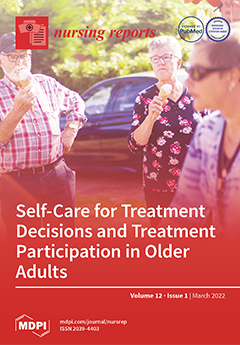Skin-to-skin, or chest-to-chest, contact (SSC) between newborns and their mothers is known as kangaroo mother care. The physiological and psychological benefits of SSC for infants and mothers are well established. The World Health Organization (WHO) recommends practicing SSC for term and preterm newborns.
[...] Read more.
Skin-to-skin, or chest-to-chest, contact (SSC) between newborns and their mothers is known as kangaroo mother care. The physiological and psychological benefits of SSC for infants and mothers are well established. The World Health Organization (WHO) recommends practicing SSC for term and preterm newborns. However, in Saudi Arabia, SSC is not practiced as widely as recommended. There is insufficient evidence of the nurses’ knowledge and attitudes regarding SSC in Saudi Arabia. The aims of this study were to describe and determine relationships between knowledge, education, beliefs/attitudes, and the implementation of SSC in Jeddah, Saudi Arabia. Thank You for Your Time and Kind Suggestion Methods: Cross-sectional descriptive data were collected from 40 nurses using an English-language version of a knowledge, beliefs/attitudes, education, and implementation questionnaire used by others. Results: The mean age of the nurses was 42.4 years (SD = 3.2), with a mean experience of 12 years (SD = 2.1). The mean total score of SSC knowledge was 13.6 (SD = 2.3), the mean of total score of attitudes/beliefs was 12.3 (SD = 3.1), the SSC education mean score was 17.1 (SD = 3.4), and the SSC implementation mean score was 17.0 (SD = 4.1). In total, 55% of the nurses were not sure of the impact of SSC on brain development in neonates, 45% could not interpret infants’ responses during SSC; 67% disagreed that it was the nurses’ responsibility to facilitate SSC, 37.5% were not aware of SSC guidelines, and 47% of the nurses had not received any continuing education on SSC in their units. Pearson correlations revealed a significant association between SSC implementation and nurses’ knowledge level (r = 0.297,
p = 0.031), education (r = 0.85,
p = 0.015), and beliefs (r = 0.31,
p = 0.024). Conclusions: Once nurses have improved their knowledge, education, and beliefs/attitudes, SSC implementation may concomitantly increase. A continuing education program and clear guidelines are needed to promote SSC adoption in practice.
Full article






